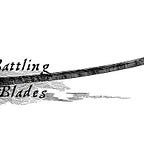Medieval Polearms: Halberds, Glaives, and Spears in Battle.
Unveiling the Mighty Arsenal of Medieval Polearms.
The Dominance of Polearms on the Medieval Battlefield
In the annals of medieval warfare, polearms emerged as stalwart companions on the battlefield, wielding unparalleled reach and versatility. From the formidable halberds to the elegant glaives and the timeless simplicity of spears, these polearms played a crucial role in shaping the outcome of historical conflicts. This article delves into the distinct characteristics, battlefield applications, and enduring legacy of medieval polearms.
I. Halberds: The Swiss Army Knife of Polearms
Halberds, with their multifaceted design, became synonymous with medieval foot soldiers and guards. Featuring a combination of an axe blade, a hook, and a spear point atop a long shaft, the halberd offered a versatile array of attacks. Whether used for piercing armor, pulling adversaries from horseback, or disarming opponents, the halberd’s adaptability made it a formidable force on the tumultuous medieval battlefield.
II. Glaives: Elegance and Lethality in One
In contrast to the utilitarian nature of halberds, glaives emerged as the more refined and specialized polearm. Characterized by a single-edged blade mounted on a pole, glaives were favored for their elegant design and agility. Glaive wielders showcased a mastery of sweeping attacks, making these polearms effective against both mounted and infantry opponents. The glaive’s aesthetics and lethal precision elevated it to a symbol of martial prowess in medieval Europe.
III. Tactical Applications: Unleashing the Power of Polearms
The tactical applications of medieval polearms varied depending on the specific weapon. Halberds, with their combination of cutting, thrusting, and hooking, were well-suited for breaking enemy formations and countering cavalry charges. Glaives excelled in one-on-one combat, utilizing sweeping motions to create openings in an opponent’s defenses. Spears, forming disciplined formations, became the frontline defense against oncoming foes.
IV. Spears: The Timeless Reach of Battlefield Precision
Spears, among the simplest yet most effective polearms, epitomized the timeless concept of battlefield precision. Featuring a pointed tip atop a long shaft, spears allowed soldiers to engage adversaries from a safe distance. The spear’s reach provided a crucial advantage against cavalry charges and offered a defensive barrier in shield formations. Spears became the backbone of medieval infantry, their simplicity belying their battlefield effectiveness.
V. The Decline and Adaptation: Changing Tides of Warfare
As firearms began to dominate the battlefield, the role of medieval polearms diminished. However, their legacy endured as symbols of a bygone era. Many polearms found new life in ceremonial and guard duties, retaining their cultural and historical significance. The adaptability of these weapons allowed them to transition seamlessly from tools of war to emblems of honor and tradition.
VI. The Influence on Martial Arts: Legacy Beyond the Battlefield
The techniques developed for wielding medieval polearms didn’t fade away with the changing nature of warfare. Instead, they found a new home in the field of martial arts. Modern practitioners study the intricate movements and strategies employed by historical polearm users, integrating these techniques into their training. The legacy of medieval polearms lives on through the discipline and skill cultivated in contemporary martial arts schools.
VII. Collectors’ Delight: Preserving the Artistry of Polearms
Today, medieval polearms have become sought-after items for collectors and enthusiasts. From meticulously crafted replicas to authentic antiques, these polearms serve as tangible links to the past. The artistry of their design, the craftsmanship in their construction, and the historical significance they carry make medieval polearms prized possessions for those captivated by the martial heritage of bygone eras.
Conclusion: The Enduring Impact of Medieval Polearms
In the symphony of medieval warfare, polearms played a distinct and resonant tune. From the utilitarian might of halberds to the refined elegance of glaives and the timeless simplicity of spears, these polearms left an indelible mark on the battlefield and the collective memory of history. As we explore the diverse array of medieval polearms, we come to appreciate not only their battlefield effectiveness but also their cultural, martial, and artistic contributions to the rich tapestry of the medieval period.
